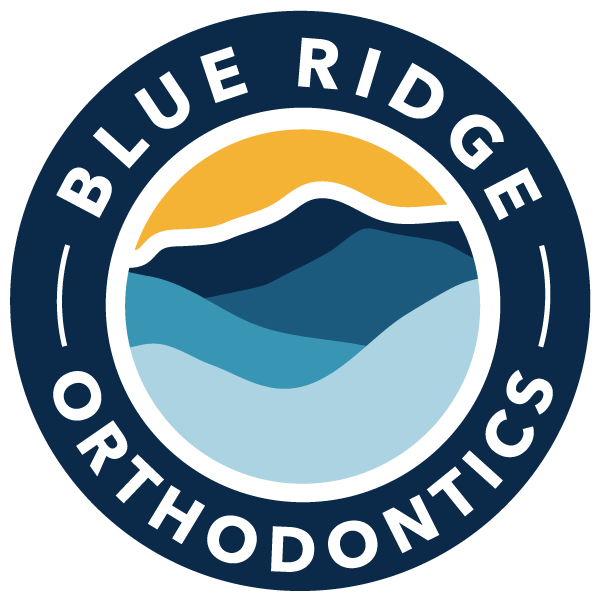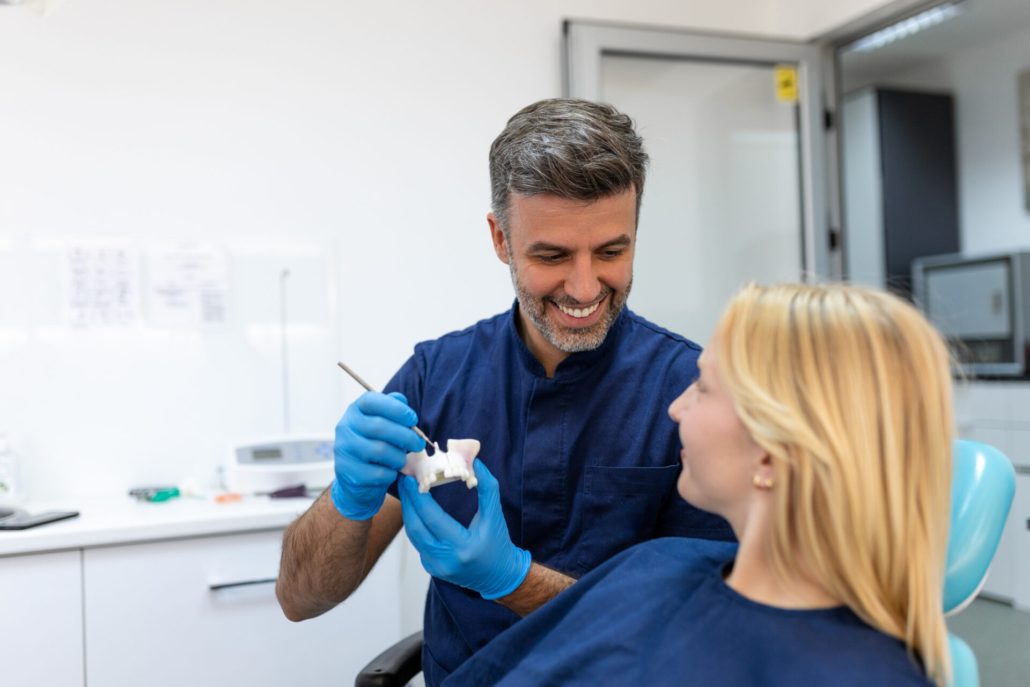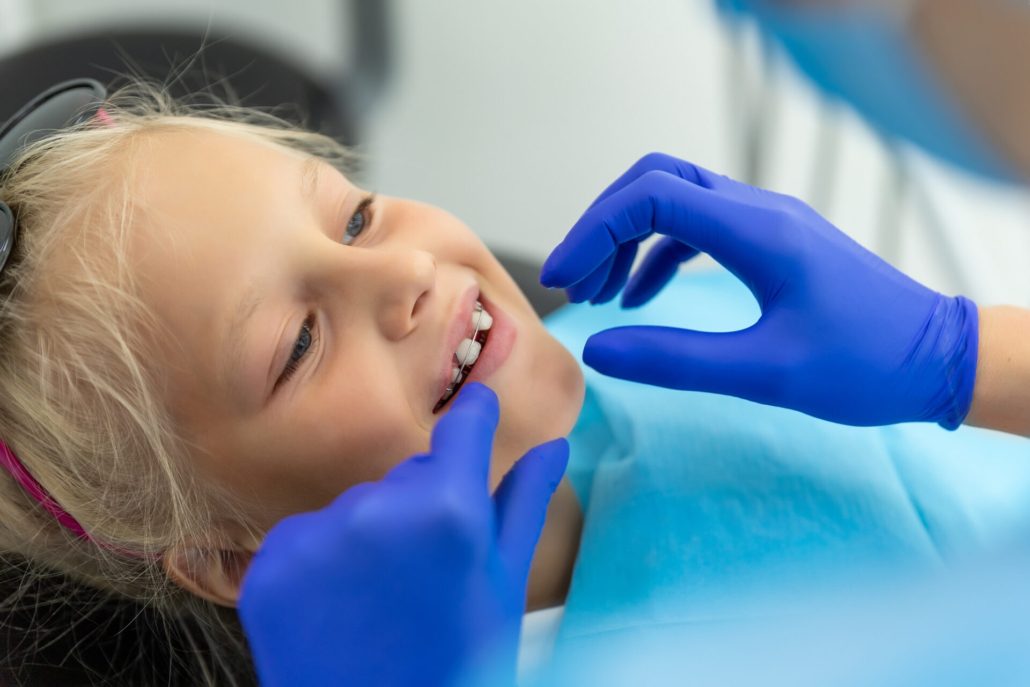After the surgery a gold chain will be attached to the orthodontic wire (if braces treated began prior to the expose and bond procedure) or attached to the adjacent tooth. This chain will be used to maneuver the affected tooth into its correct position.
Oral Hygiene
Mouth cleanliness is essential to the healing process. After each meal teeth and mouth should be brushed and cleaned as best as possible.
Bleeding
The best way to stop bleeding from the expose and bond procedure is to place a piece of damp gauze in the mouth and gently bite for 30 to 60 minutes. Rest quietly with the head elevated. If bleeding continues, use gauze for an additional 30 minutes. Pink or blood-tinged saliva may be seen for 2-3 days following the surgery and does not indicate a problem.
Swelling
Swelling is the body’s normal reaction to surgery and healing. The swelling will not become apparent until 24 hours after surgery and will not reach its peak for 2-3 days. Swelling may be minimized by the immediate use of ice packs. Apply the ice packs to the face on the outside of the affected area for 20 minutes then remove for 20 minutes, continuing while awake for the first 24 hours.
Pain & Medications
We send prescriptions to the patient’s chosen pharmacy. Unfortunately, most oral surgery is accompanies by some degree of discomfort. We recommend that patients who are not allergic to non-steroidal anti-inflammatory medication, take over-the-counter medication (like ibuprofen, Motrin and Advil) prior to the local anesthetic wearing off.
More in-depth and personalized instructions for pain management and medication is provided to patients at their appointments.
Diet
Drinking lots of fluids post-surgery is important for recovery. Immediately after the procedure while still numb, patients should avoid hot beverage and food. The day of the procedure only soft foods should be consumed. After the first day patients can progress to solid foods, with chewing localized away from the surgical site.




